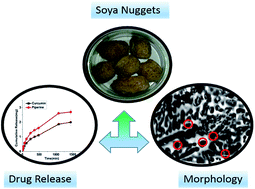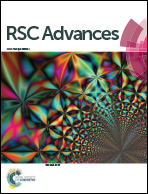Soya nuggets – a potential carrier: swelling kinetics and release of hydrophobic drugs†
Abstract
In this study, soya nuggets were used as a potential drug delivery vehicle. This work includes the swelling study of soya nuggets followed by the morphology, chemical interactions, mechanical properties and release kinetics. Multiple drugs, both hydrophobic as well as hydrophilic were encapsulated and studied for drug release. This work aims at exploiting soya nuggets as a controlled drug release vehicle.


 Please wait while we load your content...
Please wait while we load your content...